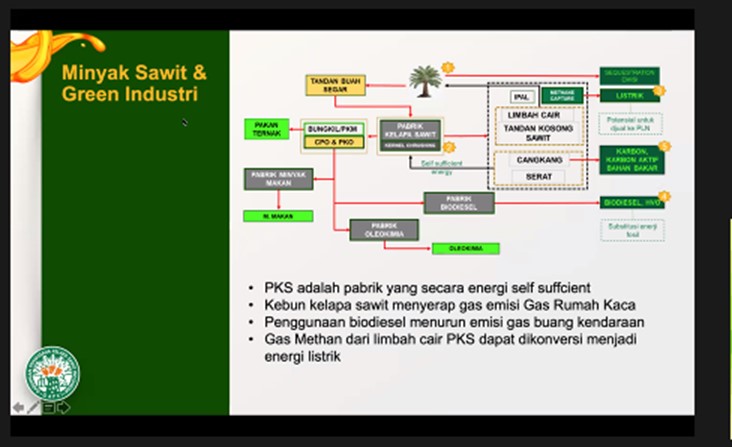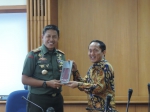Scientific Forum with Microbial Biotechnology Research Group of SITH ITB
By Adi Permana
Editor Adi Permana

BANDUNG, itb.ac.id —Microbial Biotechnology Research Group from the School of Life Science and Technology of ITB invited two speakers for the scientific forum held on Friday (5/11/2021). The webinar was conducted virtually via Zoom and moderated by Dr. Magdalena Lenny Situmorang.
The first session began with a discussion of "Drop-In Chemical and Next-Generation Biofuel Production Through Biological and Thermochemical Processes" by Dr. Neil Priharto. He stated that clean energy is a current concern for many countries, including Indonesia. One example of such energy is biofuels, which isconsidered an excellent substitute for fossil fuels due to their bio-based components that are more environmentally friendly.
Screenshot of Dr. Neil's presentation
"Despite the two generations of biofuels that have been made, following the human population growth, we still require more advanced versions with zero crop-based raw materials to avoid competition with other productions," Dr. Neil explained about the developmental condition of biofuels.
The presentation continued with the topic of bio-based drop-in chemicals, a version of petrochemical fuels that have been available on the market. Its commodity is chemically identical to the existing fossil-based chemicals. Another version called the “smart drop-in” refers to a particular subcategory that meets at least three criteria--the production process that demands less energy, the shorter production time due to the less complex process, and the production/usage of non-toxic or soft byproducts.
“Biofuels can be biologically, chemically, or integrally created through many methods. Each type has its strengths, limits, and platforms to be applied," Dr. Neil continued.
Dr. Neil then talked about the biojet fuel converter technology, specifically microalgae-based bioavture. Microalgae are the perfect constituent of fossil fuels because they can be cultivated in large, dense quantities. They can also produce fractions of sugars, ashes, lipids, and proteins. When microalgae are implemented in biojet technology, their ability of carbon dioxide conversion can be utilized to cater to the global clean energy demand.
As the second speaker of the webinar, Dzulianur Mutsla, M.T. presented her topic which titled "Impact of Ecological Diversity and Metabolism of Microbial Communities on the Drying Process of Australian Coffee Beans Under the Sun".
According to Dzulianur, many people like drinking coffee because of its taste complexity influenced by its five processing stages: agriculture management, bean processing, milling, preparation, and serving. "My research focuses on the second stage, which is the bean processing via drying under the sun."
Screenshot of Dzulianur's presentation
She then showed that the drying process is achieved based on the spontaneous fermentation of the coffee fruit. The distinctive coffee flavor will appear due to its closed system inside the beans. The study uses the Catuai Rojo and K7 varieties of Australian coffee; despite their low production rate, they have a rapid growth rate to satisfy the “drinking coffee” culture in their origin country.
“Australian coffee has the potential to be further developed as it is free from the coffee berry disease and rust. It also possesses 10-15% lower caffeine concentration and can grow in cold environments to produce a more complex flavor profile," she added.
Therefore, Dzulianur wishes to analyze the microbial contribution during the drying process of coffee fermentation and investigate the biochemical changes that occurred. Even though her research is yet to be completed, she discovered that the observed yeast and bacteria are diverse. Furthermore, their activities are affected by the drying process under the sun. Both types of microorganisms grow significantly by utilizing the sugars in the hull and pulp of the coffee fruits to produce mannitol, glycerol, and lactic acid that reduces pH.
“More research needs to be done to observe the impact of microbial growth and metabolism on the coffee’s quality and taste," she concluded.
Reporter: Sekar Dianwidi Bisowarno (Rekayasa Hayati, 2019)
Translator: Ruth Nathania (Teknik Lingkungan, 2019)

.jpg)

.jpg)
.jpg)
.jpg)

